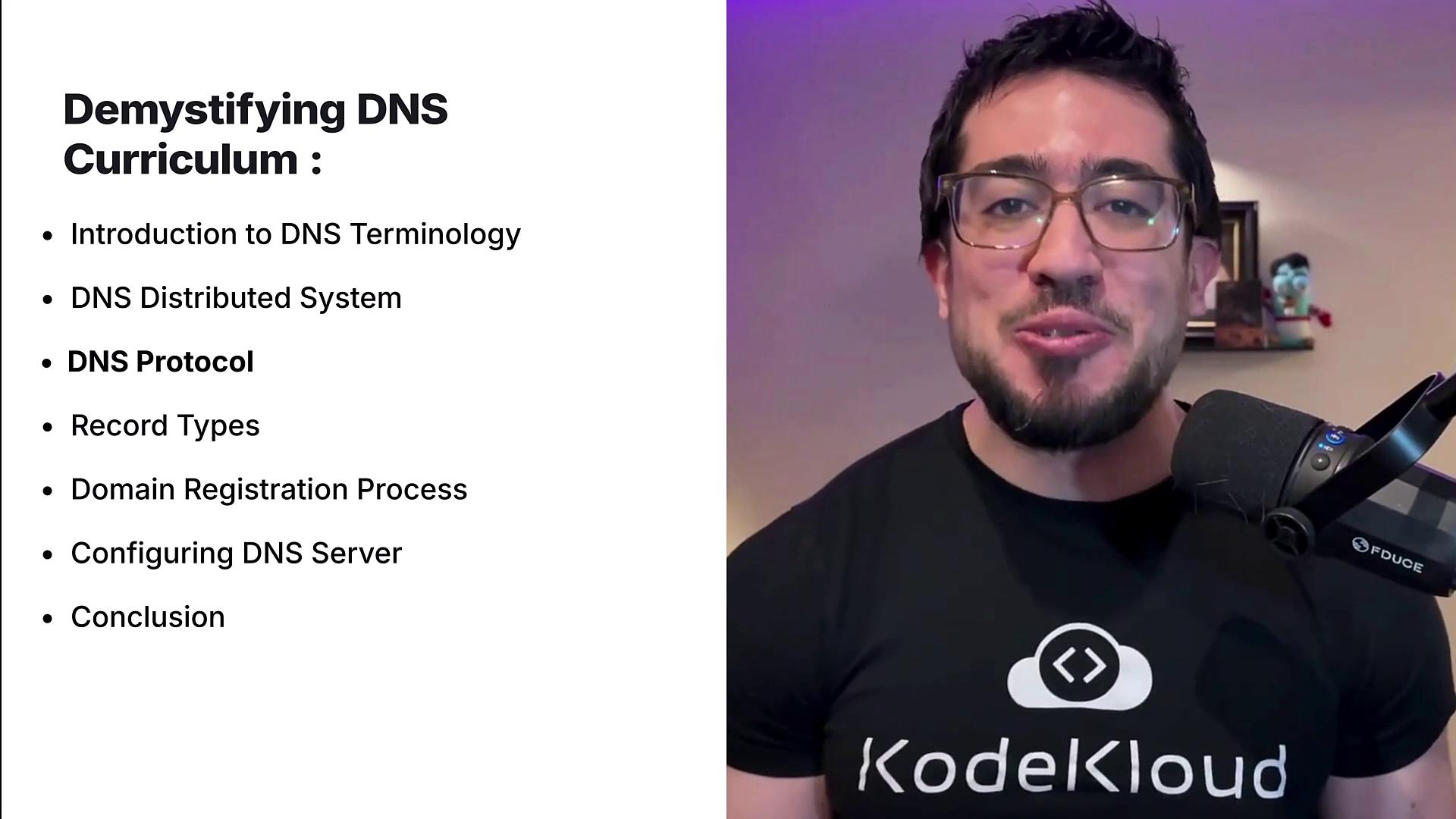Demystifying DNS
Introduction
Course Introduction
Welcome to the "Demystifying DNS Domain Name System" lesson.
I’m Juan Carlos Martinez, and I will guide you through the fascinating world of DNS—one of the key protocols that powers the internet. DNS functions both as a protocol and a distributed system. Many resources tend to focus on one aspect or assume prior knowledge of the other, which can be challenging for newcomers. This lesson bridges that gap by combining foundational theory with practical, real-world applications.
This course is specifically designed for beginners. You will gain a strong foundation in DNS through interactive labs, practical demonstrations, and a final project where you will configure a simple DNS server on a Linux environment.
Lesson Overview
Understanding DNS Basics
We begin with an introduction to essential DNS terminology and tools. One of the key utilities you will learn is dig, a command-line tool for querying DNS servers and analyzing responses. Understanding how to use dig effectively is essential for troubleshooting and verifying DNS configurations.
DNS as a Distributed System
Next, we will explore DNS from a systems perspective. This section covers key topics such as:
- Resolvers and the difference between recursive and iterative queries
- Name servers and their replication mechanisms
- Concepts like Anycast and GeoDNS that allow DNS to function globally
Exploring DNS Protocol Features
We then shift our focus to protocol-specific aspects of DNS. Topics in this section include:
- Extended DNS (EDNS)
- DNS Security Extensions (DNSSEC)
- DNS over HTTPS
Additionally, you will explore various record types (A, AAAA, and CNAME) and see how they are used in real-world naming scenarios.

Domain Registration Insights
Following the protocol discussions, we will delve into the domain registration process. This section clarifies the roles of registrars, registrants, and the importance of secure domain management to prevent hijacking.
Final Project: Building a DNS Server
The course culminates with a hands-on project where you will set up and configure a basic DNS server. This practical exercise reinforces the theoretical concepts and prepares you for managing DNS in diverse networking scenarios.
Hands-On Labs
Our interactive labs are designed to help you gain practical experience. You will work with BIND on a Linux system to install, configure, and manage DNS servers, reinforcing theoretical concepts through real-world exercises.
Community Support
In addition to the course content and labs, you will have access to KodeKloud's vibrant community forum. Engage with fellow learners, share insights, and get expert guidance through interactive discussions.

Conclusion
By the end of this lesson, you will have a comprehensive understanding of both the system and protocol aspects of DNS. This knowledge will be invaluable whether you're managing Linux environments, building networks, or troubleshooting DNS-related issues.
If you’re ready to unlock the secrets of DNS and enhance your network administration skills, enroll now and dive in!
For further learning, check out:
Happy learning!
Watch Video
Watch video content